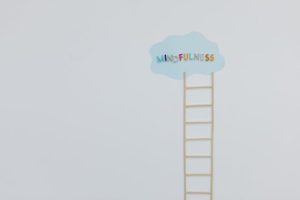**Abstract:** Discover how to harmoniously blend traditional Feng Shui principles with contemporary design to create a balanced and inviting modern home. Unlock the secrets of energy flow today!
Understanding Feng Shui in Modern Context
Feng Shui, an ancient Chinese practice, emphasizes the arrangement of space to enhance the flow of energy, or “chi.” In modern homes, the challenge lies in integrating these time-honored principles with contemporary aesthetics. By understanding the core tenets of Feng Shui, homeowners can create spaces that not only look beautiful but also promote health, happiness, and prosperity.
Embracing Natural Elements
One of the fundamental aspects of Feng Shui is the incorporation of natural elements. In a modern setting, this can be achieved through the use of plants, water features, and natural materials. For example, adding indoor plants like snake plants or peace lilies can purify the air and bring life into your space. Water features, such as small fountains, not only add tranquility but also symbolize wealth and abundance. By blending these elements into your decor, you create a serene environment that resonates with positive energy.
Color Psychology and Energy Flow
Colors play a crucial role in Feng Shui, influencing mood and energy levels. In contemporary homes, selecting a color palette that aligns with Feng Shui principles can enhance the overall ambiance. Soft earth tones promote stability and grounding, while blues and greens encourage calmness and relaxation. Incorporating accent colors, such as reds or yellows, can stimulate creativity and joy. By thoughtfully choosing colors that reflect your intentions, you can create a harmonious atmosphere that supports your lifestyle.
Furniture Arrangement for Optimal Energy
The arrangement of furniture is vital in ensuring a smooth flow of energy throughout your home. In modern designs, it’s important to avoid clutter and maintain open spaces. Positioning furniture to face the entrance encourages a welcoming environment, while ensuring that pathways are clear allows energy to circulate freely. For instance, placing a sofa against a solid wall provides support and stability, while also creating an inviting space for social interactions. Thoughtful furniture arrangement can significantly enhance the energy dynamics of your home.
Incorporating Symbolism and Personal Touches
Feng Shui encourages the use of symbols that resonate with personal meaning. In a modern context, this can include artwork, sculptures, or decor that reflect your aspirations and values. For example, a piece of art depicting nature can evoke feelings of tranquility and connection to the earth. Additionally, incorporating personal items that tell your story can create a sense of belonging and warmth. By surrounding yourself with meaningful symbols, you cultivate an environment that inspires positivity and motivation.
Creating Balance with Light and Space
Natural light is a crucial element in Feng Shui, as it enhances the flow of energy and uplifts mood. In modern homes, maximizing natural light through large windows or open layouts can create a sense of spaciousness and vitality. Additionally, incorporating mirrors strategically can reflect light and expand the perception of space. However, it’s essential to balance this with areas of coziness, such as soft lighting fixtures, to foster a sense of comfort. Achieving this balance can lead to a more harmonious living environment.
Conclusion: A Harmonious Blend of Tradition and Modernity
By understanding and applying Feng Shui principles, homeowners can successfully merge tradition with contemporary style. This thoughtful approach not only enhances the aesthetic appeal of modern homes but also promotes a positive and nurturing environment. Embrace the art of Feng Shui and transform your living space into a sanctuary of balance and harmony, where both energy and style coexist beautifully.










